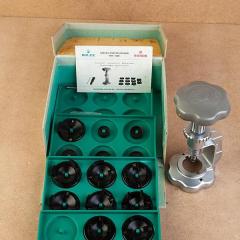Your Walkthroughs and Techniques
Post descriptive walkthroughs of watches you have stripped down and serviced and/or repaired, parts you have made or techniques you wish to share.
This is an interesting section where we post our challenges and how we have over-come them. You can also post walkthroughs and share your techniques.
SECTION RULES
This section is strictly for those posting real step-by-step walkthroughs of actual repair or servicing techniques relating to watch repair and/or horology in general. The idea is that we help each other by describing or sharing our repair techniques, or telling a story of how we have progressed.
If you are not posting step-by-step walkthroughs, such as - you would just like to showcase a completed repair job, then please choose a more appropriate sub-forum for your content. If your post is not deemed to be a legitimate walkthrough then a moderator will move your post to the appropriate section without notice. Thank you for your co-operation.
- You must be a member with at least 10 posts on the forum in order to contribute in this section
365 topics in this forum
-
- 8 replies
- 3.2k views
-
- 20 replies
- 30.5k views
-
- 7 replies
- 6.3k views
-
- 9 replies
- 8.6k views
-
- 19 replies
- 8k views
-
- 14 replies
- 21k views
-
- 45 replies
- 30.4k views
-
- 17 replies
- 12.8k views
-
- 22 replies
- 8.8k views
-
- 19 replies
- 28.9k views
-
- 37 replies
- 48.2k views
-
- 11 replies
- 4.9k views
-
- 94 replies
- 72.1k views
-
- 1 reply
- 4.8k views
-
- 7 replies
- 26k views






.jpg.6225a64433578a11e0218b27c20b13f5.thumb.jpg.d82b0cd1e370f3a3a59a06afa957d184.jpg)









